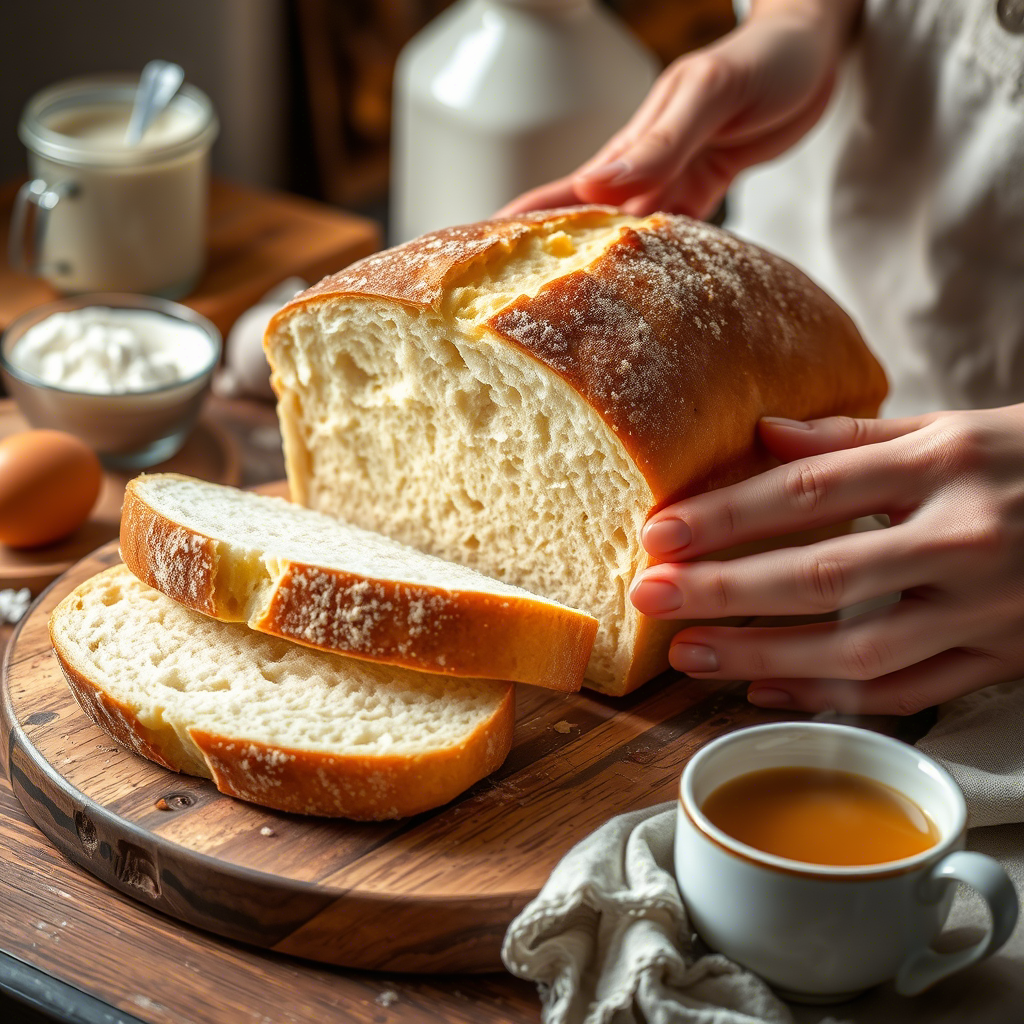Have you ever wondered why some bread feels like a cloud in your mouth while others are dense and heavy? Japanese milk bread, with its unparalleled softness and light texture, is one of those magical creations that redefine our expectations of what bread can be.
This delightful treat has captivated bakers worldwide, inspiring countless adaptations and recipes. In this article, we’ll explore the history, techniques, and secrets behind making perfect Japanese milk bread at home.
Whether you’re an experienced baker or just starting out, this guide will help you create loaves so irresistibly fluffy they’ll melt in your hands.
The Origins of Japanese Milk Bread
Japanese milk bread, also known as shokupan , originated during Japan’s post-war era when Western baking methods were introduced to the country. The result was a harmonious blend of traditional Japanese precision and European-style baking techniques.
What sets it apart from other types of bread is its use of ingredients like milk, sugar, and eggs, which give it a rich flavor and ultra-soft crumb.
One key ingredient in Japanese milk bread is tangzhong , a pre-cooked flour-and-water roux that increases moisture retention and creates a tender texture. By incorporating tangzhong into the dough, bakers ensure their loaves remain fresh for days without becoming stale—a hallmark feature of this beloved bread.
Understanding these origins not only adds depth to your appreciation but also equips you with knowledge to replicate authentic results at home.
Why Is Japanese Milk Bread So Popular?
Beyond its delicious taste, there’s something truly special about how versatile Japanese milk bread is. Its mild sweetness makes it ideal for both sweet and savory applications.
You can enjoy slices toasted with butter, turn them into French toast, or even layer them with fillings like whipped cream and fruit for decadent desserts.
But popularity aside, what really draws people in is the challenge—and satisfaction—of mastering the recipe. Baking Japanese milk bread requires patience and attention to detail, but the reward is worth every effort.
For many home bakers, creating that first perfectly soft loaf becomes a source of immense pride. As one enthusiastic baker put it, “It’s not just about eating; it’s about achieving perfection.” If you’re ready to take on this rewarding journey, let’s dive deeper into the steps involved!
Key Techniques for Making Perfect Japanese Milk Bread
To bake successful Japanese milk bread, understanding the process is crucial. Here are three essential techniques to focus on:
Mastering Tangzhong : Start by preparing the tangzhong, which involves cooking a small portion of flour and water until it forms a thick paste. This step may seem simple, but it plays a vital role in keeping the bread moist and springy. Be sure to cool the tangzhong completely before adding it to your dough mixture.
Kneading Properly : Kneading develops gluten, giving structure to your bread. Use either a stand mixer with a dough hook or knead by hand for around 10–15 minutes. Look for the “windowpane test”—stretch a piece of dough between your fingers—if it stretches thin without tearing, you’ve achieved the right consistency.
Proofing Patience : Proofing allows yeast to work its magic, causing the dough to rise. Avoid rushing this stage! Allow enough time for the dough to double in size, usually 1–2 hours depending on temperature conditions. If possible, proof overnight in the refrigerator for enhanced flavor.
By focusing on these techniques, you’ll set yourself up for success in crafting beautiful loaves of Japanese milk bread.
Common Challenges and How to Overcome Them
Even seasoned bakers encounter hurdles along the way. One common issue is overworking the dough, which can lead to tough textures. To prevent this, pay close attention to how the dough feels throughout the kneading process. Another frequent problem is underproofing, resulting in dense loaves. Remember, patience pays off here—you want the dough fully risen before baking.
For beginners, troubleshooting might feel overwhelming, but don’t lose heart! With practice, you’ll develop intuition for recognizing signs of well-proofed dough and properly developed gluten. Plus, mistakes often yield valuable lessons. Embrace each attempt as part of your learning curve, and soon enough, you’ll produce consistently excellent results.
Inspiration Through Experimentation
Once you’ve mastered the basics, why stop there? Japanese milk bread opens doors to endless creativity. Try experimenting with flavors by adding matcha powder, chocolate chips, or dried fruits to your dough. Or go bold with shaped breads inspired by Japanese bakery classics, such as rolls stuffed with custard cream or red bean paste.
Sharing homemade Japanese milk bread with friends and family can also deepen your connection to the craft. There’s nothing quite like watching someone savor a slice of bread you made with love and care. These moments remind us that baking isn’t merely functional—it’s deeply personal and meaningful.
As one baker reflected, “Every loaf tells a story. Mine says, ‘I tried, I learned, and I grew.’”
Conclusion
In summary, Japanese milk bread represents more than just a culinary delight—it embodies tradition, innovation, and passion. From its humble beginnings in post-war Japan to its global popularity today, this bread continues to inspire bakers everywhere.
By following proper techniques, embracing challenges, and letting your creativity shine, you too can join the ranks of proud shokupan enthusiasts.
So, are you ready to try your hand at baking Japanese milk bread? Share your experiences in the comments below, or tag us on social media with pictures of your creations. Happy baking, and remember—the secret to great bread lies in enjoying the process as much as the final product!

Thayná Alves is an influential digital content creator who has carved out a significant space in the realms of technology, finance, and entrepreneurship. Through her blog, Newbacker.com , she stands out as an authentic and accessible voice for individuals seeking practical information about investments, innovation, and emerging trends in the financial market.

